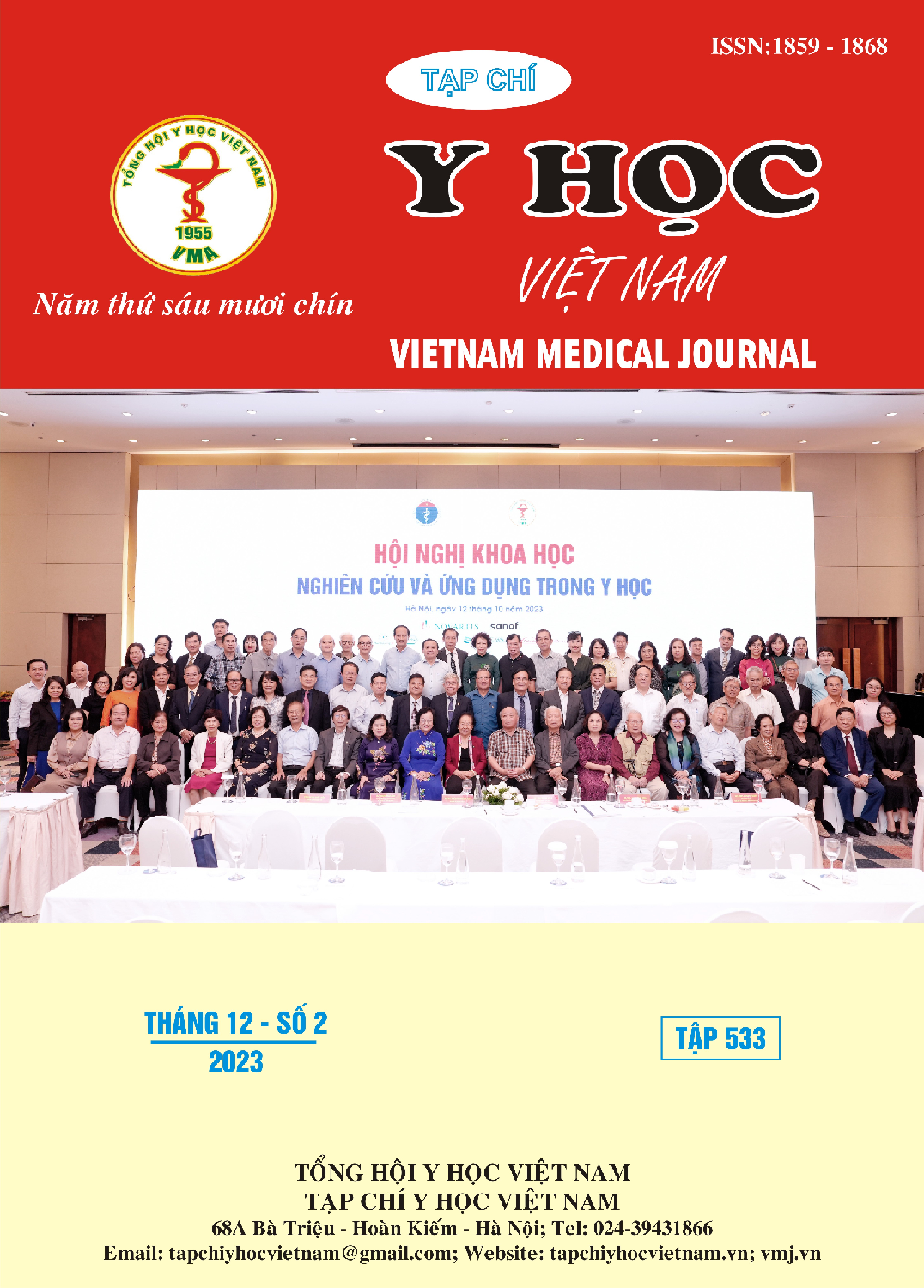CLINICAL FEATURES, IMAGES AND ANATOMY OF PATIENTS WITH LUNG LESIONS CLASSIFIED LUNG RADS 4 (2019)
Main Article Content
Abstract
Chest computed tomography combined with biopsy helps to diagnose malignant pulmonary nodules early, which is of great significance in deciding whether to monitor the nodule or lobectomy for malignant nodules to help reduce the rate. Objectives: To describe clinical, images features and compare those features with the results of pulmonary nudule anatomy. Materials and methods: A descriptive cross-sectional study on 89 patients with localized pulmonary nodule which has indications of biopsy or surgery at Hanoi Medical University Hospital from 05/2022 to 08/2023. Results: A majority of pulmonary nodules were found in the right upper lobe with 43,8%; solitary pulmonary nodules made up the majority of 61,8%. (Nodules > 15 mm: 76,4%; nodules ≤ 15 mm: 23,6%; solid nodules: 88,8% % and mixed nodules: 11,2%, round shape: 77,5% and not round: 22,5%; irregular margin: 82%; regular margin: 18%; eccentric and stippled calcification: 9%; non-calcification: 87,6%; air-bronchogram in nodules: 23,6 and benign confirmed by biopsy: 69,7% and 30,3% respectively. The sensitivity and specificity of features included size > 15 mm; the character of margin, contrast absortion for malignant nodules diagnosis are 82,2%, 91,9%, 100% and 37%, 40,7%, 13,04% respectively. Conclusions: Three features of nodules: Size ≥ 15 mm; the character of margin, contrast absortion are suggestive malignant characteristics.
Article Details
References
2. Hanley K. S. (2003), “Classifying solitary pulmonary nodules: new imaging methods to distinguish malignant, benign lesions”, Postgraduate medicine, 114(2), 29-35
3. Ost D., Fein A. M., Feinsilver S. H. (2003), “The solitary pulmonary nodule”, New England Journal of Medicine, 348(25), pp.2535-2542.
4. The Japanese Society of CT Screening (2011), “Low-dose CT Lung Cancer Screening Guidelines for Pulmonary Nodules Management, Version 2, pp 1-9
5. Tan B. B., Flaherty K. R., Kazerooni E. A., & Iannettoni, M. D. (2003), "The Solitary Pulmonary Nodule”, Chest, 123(1), pp. 89–96.
6. American College of Radiology (2019), Lung ‐ RADS ® Version 1.1 Assessment Categories 3, 2019
7. Hoàng Thị Ngọc Hà, Đoàn Dũng Tiến, Lê Trọng Khoan (2020), Nghiên cứu giá trị của cắt lớp vi tính ngực liều thấp trong phát hiện sớm các nốt mờ phổi ác tính, Tạp chí Y Dược học, Trường ĐH Y Dược, Đại học Huế
8. Jeanbourquin D., Bensalah J., Duong K. (2012), «Nodule pulmonaire solitaire», Imagerie thoracique de l’adult et de l’enfant 2nd edition, Elsevier Masson, pp. 276-293.
9. Ost D. (2013), Approach to the patient with Pulmonary nodules. Fishman’s Pulmonary Diseases and Disorders. 5th editio, McGraw-Hill Education, 3348–3378


